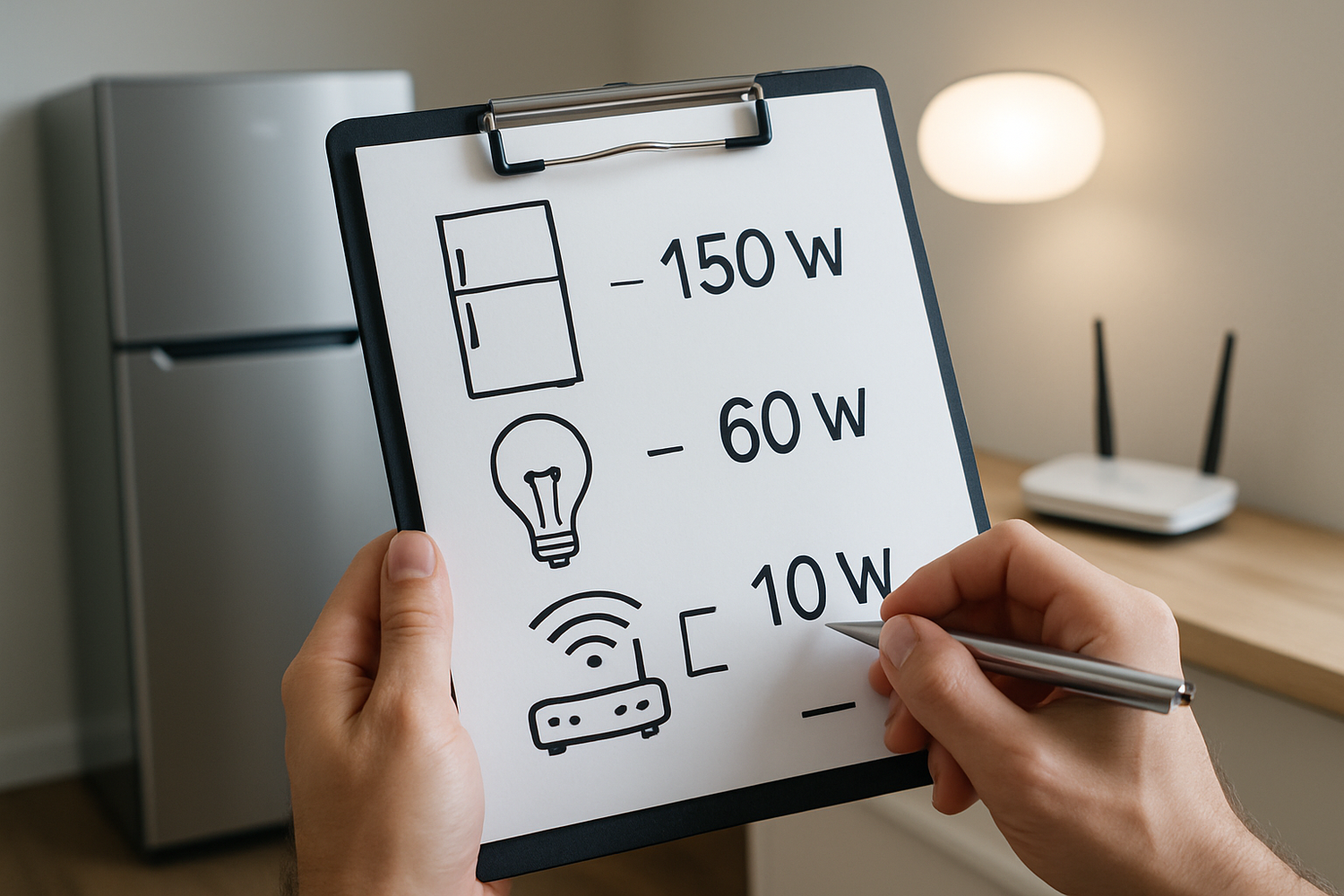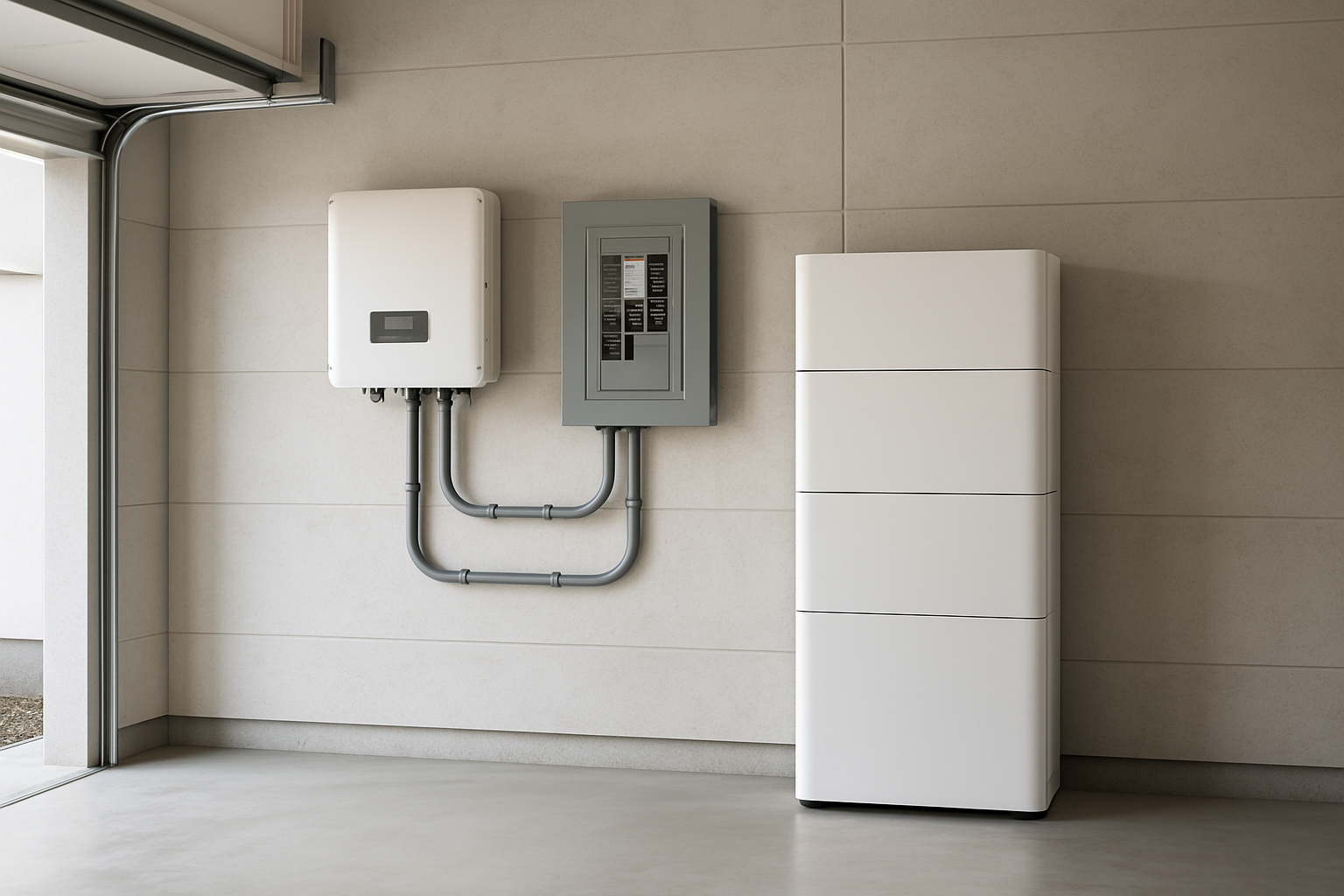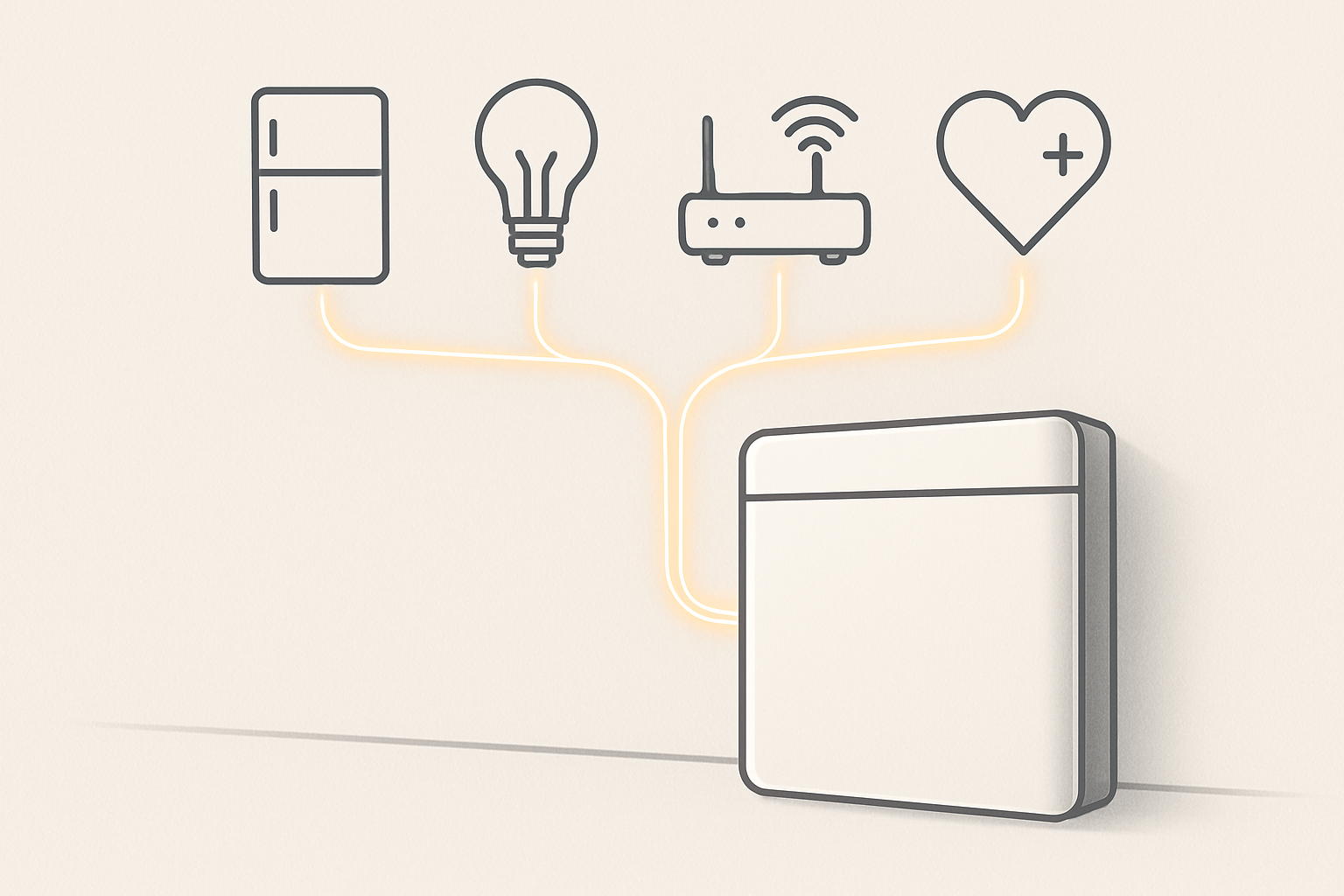Power outages are becoming more common, leaving households without electricity for hours or even days. A home battery backup system provides peace of mind and energy security. But simply buying a battery isn't enough. The critical question is determining the right home battery size to meet your specific blackout power needs. An undersized system will leave you in the dark, while an oversized one is an unnecessary expense. This guide provides a clear path to an accurate battery capacity calculation.
First, Pinpoint Your Essential Appliances
The foundation of any emergency battery sizing is understanding exactly what you need to power. This isn't about running your entire home as usual; it's about identifying the critical loads necessary for safety and comfort during an outage.
Creating Your Critical Load List
Walk through your home and list the appliances and devices that are non-negotiable during a blackout. This typically includes items like:
- Refrigerator and freezer
- Key lights in common areas
- Internet router and modem
- Phone chargers
- Medical devices (e.g., CPAP machine)
- Sump pump
- Well pump (for rural homes)
Focus on necessities. Items like electric ovens, clothes dryers, and central air conditioning are usually excluded as their high power consumption would require a very large and costly battery system.
Calculating Wattage and Watt-Hours
Once you have your list, you need two pieces of information for each item: running watts and starting watts. Running watts is the power an appliance consumes continuously. Starting watts (or surge watts) is the extra power a device with a motor needs for a few seconds to start up. You can usually find this information on the appliance's label or in its manual.
Here is a table with estimated wattages for common household items:
| Appliance | Estimated Running Watts | Estimated Starting Watts |
|---|---|---|
| Refrigerator/Freezer | 700 W | 2000 W |
| LED Light Bulb (10W) | 10 W | 10 W |
| Wi-Fi Router | 15 W | 15 W |
| Laptop Charger | 65 W | 65 W |
| Sump Pump (1/3 HP) | 800 W | 1300 W |
| CPAP Machine | 60 W | 60 W |
Note: These are estimates. Always check your specific appliances for accurate numbers.
Calculating Your Total Blackout Energy Needs
With your critical load list and wattage information, you can now perform the battery capacity calculation. This will tell you the total energy your system needs to store, measured in kilowatt-hours (kWh).
The Core Calculation: Capacity in kWh
The process is straightforward. For each appliance, multiply its running watts by the number of hours you expect to use it during a 24-hour blackout. This gives you the daily watt-hours (Wh) for each device.
Example Calculation for a 24-Hour Outage:
- Refrigerator (700W): Runs about 8 hours a day (it cycles on and off). 700W x 8 hours = 5,600 Wh
- Five 10W LED Lights: Used for 6 hours. 50W x 6 hours = 300 Wh
- Wi-Fi Router (15W): Runs for 24 hours. 15W x 24 hours = 360 Wh
- Laptop Charging (65W): Charged for 4 hours. 65W x 4 hours = 260 Wh
Total Daily Energy Need: 5,600 + 300 + 360 + 260 = 6,520 Wh. To convert this to kilowatt-hours (kWh), simply divide by 1,000. You would need a battery with at least 6.52 kWh of usable capacity for one day of backup.
Factoring in Blackout Duration
How long do outages typically last in your area? While a 24-hour plan is a good start, many people prefer the security of a 48-hour or 72-hour backup. To plan for this, multiply your daily kWh need by the number of days you want autonomy. For a 3-day outage using the example above, you would need: 6.52 kWh/day * 3 days = 19.56 kWh.
Understanding Power Output (kW Rating)
Capacity (kWh) tells you how much energy is stored, but the power rating (kW) tells you how much electricity the battery can deliver at one time. Your battery's power rating must exceed the total running watts of all appliances you might use simultaneously. More importantly, it must handle the single largest starting wattage from your list (usually the refrigerator or a pump).
Matching the Calculation to the Right Battery Technology
Once you know your required kWh and kW, you can select the right energy storage solution. The technology inside the battery matters for reliability and longevity, especially in an emergency.
Why LiFePO4 is a Strong Choice for Home Backup
Lithium Iron Phosphate (LiFePO4) batteries are an excellent choice for a home energy storage system. They offer superior safety, a much longer lifespan, and a higher Depth of Discharge (DoD) compared to older lead-acid technologies. A high DoD means you can use more of the battery's stored energy without damaging it. Most LiFePO4 batteries can be safely discharged to 80-90% of their total capacity.
Key Specifications to Check
Beyond capacity and power, look at specifications that affect real-world use. As detailed in the ultimate reference on solar storage performance, metrics like round-trip efficiency are crucial. This measures how much energy you get out for every unit of energy you put in. High efficiency means less wasted energy. Also, consider scalability—the ability to add more battery units in the future if your needs grow.
The Role of a Solar Inverter
A solar power inverter is the brain of the system. It converts the DC power from your battery into the AC power your appliances use. A hybrid solar energy inverter can manage power from the grid, a battery, and solar panels simultaneously, providing seamless and efficient power management for your entire home energy storage system.
Beyond the Basics: Real-World Considerations
Sizing a battery is more than just a math problem. Global energy trends show a massive shift toward renewable sources and battery storage for grid stability. According to a report from the International Renewable Energy Agency (IRENA), Grid codes for renewable powered systems, advanced inverters in battery systems are becoming capable of supporting the grid, highlighting their growing importance. This same technology ensures your home stays powered independently.
The Impact of Solar Recharging
Pairing your battery with solar panels changes the sizing equation. With solar, you can recharge your battery during the day, even during a grid outage. This means you might not need a massive battery sized for three full days of autonomy, as you can replenish its energy daily. This makes your system more resilient and can reduce the initial investment.
Scalability for Future Needs
Your energy needs might change. You may add new appliances or desire more backup capacity later. Choosing a modular energy storage battery allows you to expand your system easily without replacing the entire setup. This provides a flexible, future-proof solution.
Finalizing Your Emergency Power Strategy
Calculating your home battery size for a full blackout is a process of careful planning. By identifying your critical loads, calculating your daily energy consumption in kWh, and accounting for your desired backup duration, you can confidently select a system. This preparation ensures that when the grid goes down, your essential systems stay on, providing security and achieving true energy independence. The International Energy Agency (IEA) emphasizes in its research the critical role of batteries in ensuring a secure energy transition, a principle that applies as much to individual homes as it does to national grids.
Frequently Asked Questions
How many days can a home battery power a house?
A typical 10 kWh home battery can power essential appliances like a refrigerator, lights, and internet for about 24 hours. However, the exact duration depends entirely on the battery's size and your electricity usage. A larger battery or lower consumption will extend the backup time.
Can a home battery run my entire house during a blackout?
Yes, a whole-home backup is possible, but it requires a significantly larger and more complex energy storage system. Most homeowners opt for a partial backup system that powers only essential loads, as this provides a more cost-effective balance of security and investment.
What is the difference between kWh and kW in a battery?
Think of kilowatt-hours (kWh) as the size of your battery's 'gas tank'—it measures the total amount of energy it can store. Kilowatts (kW) represent the 'engine's power'—it measures the maximum rate of electricity the battery can deliver at any given moment to power your appliances.
Disclaimer: This article is for informational purposes only and does not constitute financial or legal advice. Consult with a qualified professional for personalized recommendations regarding your energy system.





Leave a comment
All comments are moderated before being published.
This site is protected by hCaptcha and the hCaptcha Privacy Policy and Terms of Service apply.